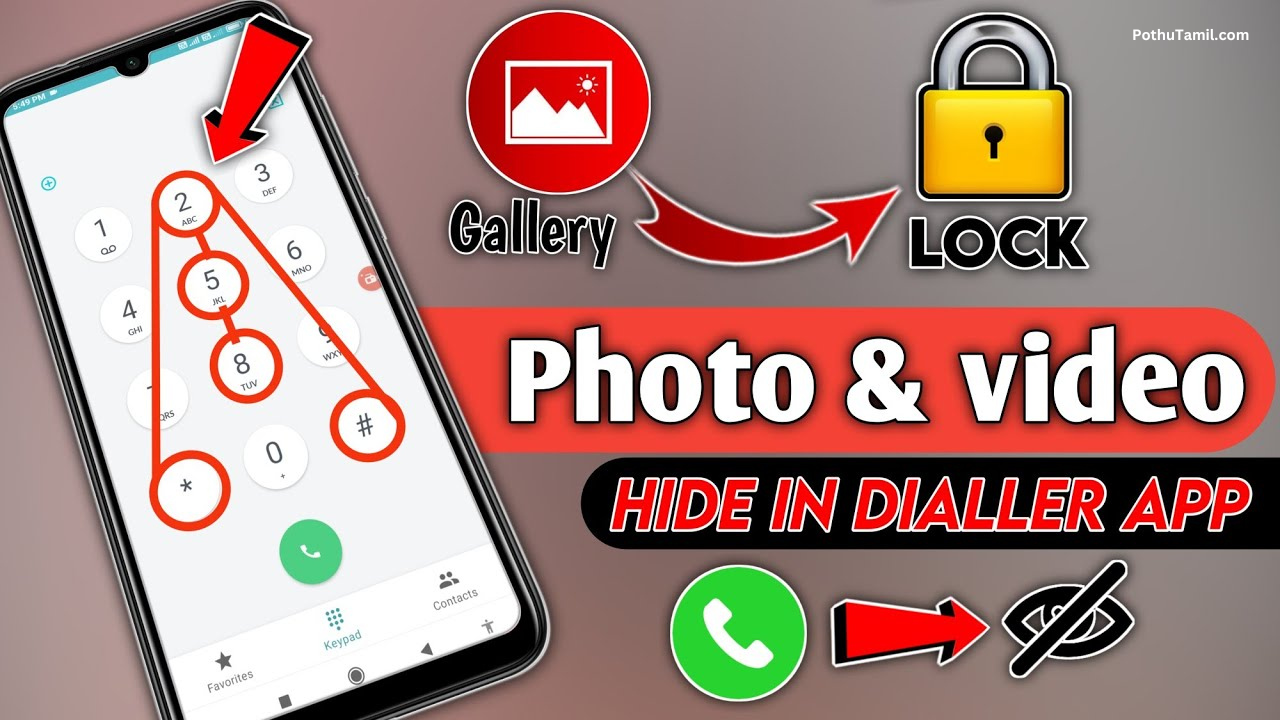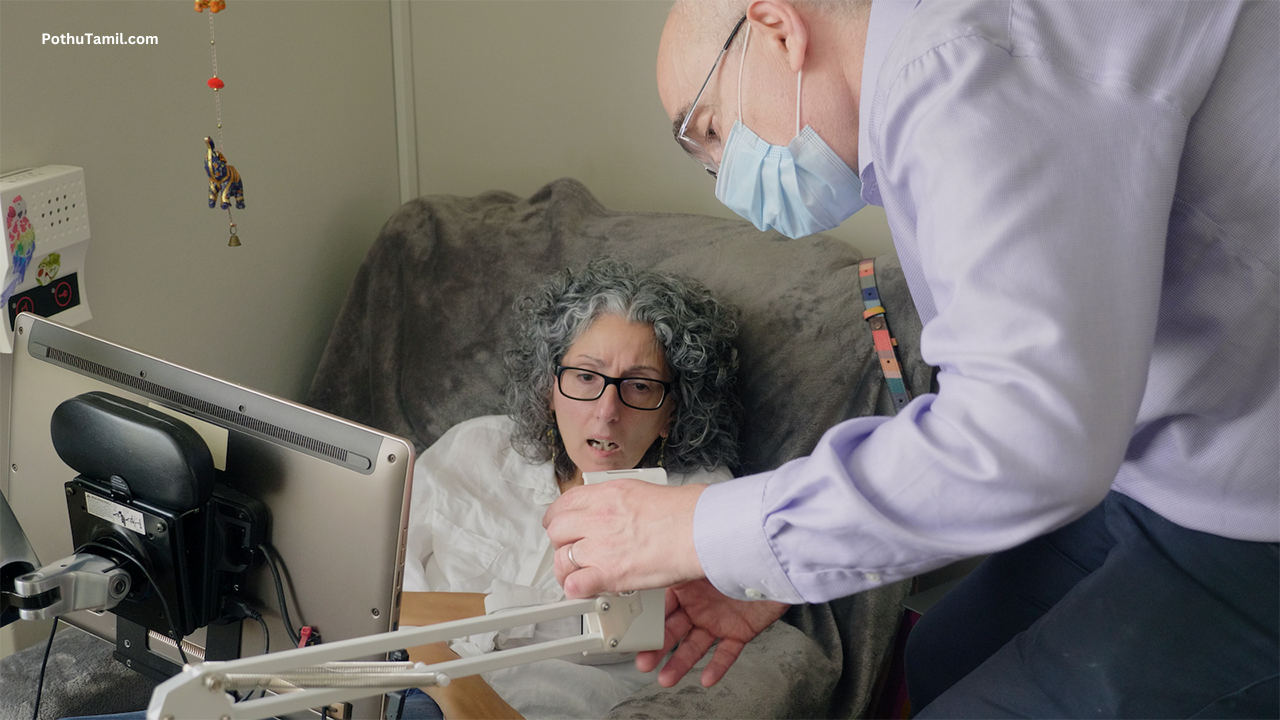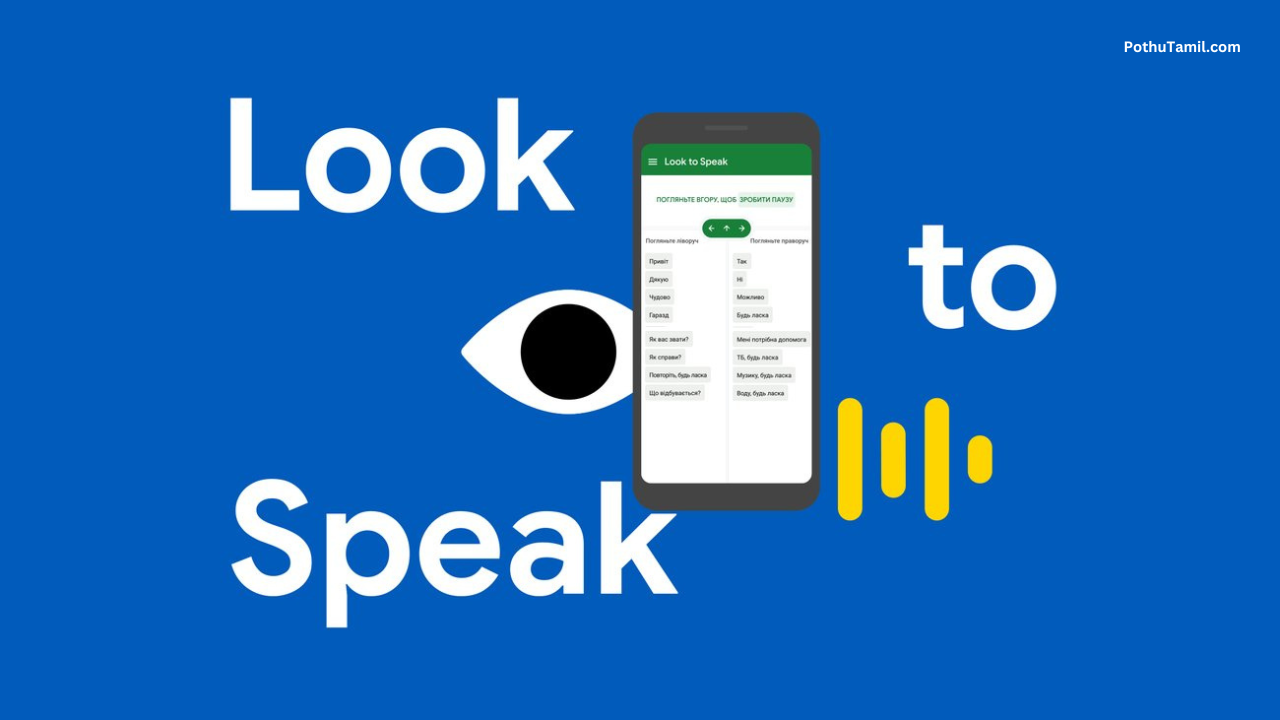Introduction
In an age where accessibility and inclusion are becoming essential pillars of technological advancement, Google has taken a remarkable step forward with the introduction of the Look to Speak app. Designed for people with speech and motor impairments, this innovative tool allows users to communicate using only their eyes. By combining machine learning, computer vision, and Android smartphone technology, Look to Speak delivers a highly practical and emotional solution for users who face significant communication barriers. This review will explore the features, functionality, setup process, real-world impact, and potential limitations of this unique app that has already begun changing lives across the globe.
What is Google Look to Speak?
Google Look to Speak is an eye-tracking communication app that enables users to speak pre-written phrases aloud by simply looking left or right at their smartphone screen. It is a part of Google’s broader “Experiments with Google” initiative, which showcases creative uses of technology to solve real-world problems. The app is free to download and available on Android devices, including older models, making it widely accessible. It was developed with the goal of empowering people who may not be able to speak or use their hands but still want to express themselves in a meaningful and immediate way.
The core concept behind the app is simple yet powerful: users look in different directions to choose between two sets of phrases. Each choice narrows down the selection until the final phrase is spoken aloud by the app’s text-to-speech engine. The app requires no additional hardware—only a smartphone with a front-facing camera and basic Android functionality.
How It Works
Google Look to Speak uses the device’s front camera to detect the direction in which the user is looking. During the initial setup, the app calibrates itself to the user’s eye movement patterns, ensuring accurate detection of left, right, and upward glances. The interface then presents the user with two options at a time—each associated with a simple direction. As the user continues to choose left or right, the app progressively filters the options until it lands on the exact phrase the user wants to communicate. Once selected, the app speaks the phrase using a voice synthesizer, allowing others to hear it in real-time.
The app includes a default set of commonly used phrases such as “Hello,” “Thank you,” and “I need help,” but it also allows users or caregivers to customize the phrase list to include specific messages relevant to the individual’s needs and preferences. These phrases can be organized for ease of navigation, giving users more control over their communication.
Accessibility and Impact
The Look to Speak app has been widely praised by accessibility advocates, caregivers, and people with disabilities. For individuals affected by conditions like ALS (Amyotrophic Lateral Sclerosis), cerebral palsy, spinal cord injuries, or stroke-related paralysis, traditional speech and movement can be significantly impaired. In such cases, even the most basic communication can become frustrating or impossible.
This app breaks down that barrier by offering a simple, portable, and low-cost solution to assist with communication. Unlike complex assistive devices that may require specialized hardware or costly installations, Look to Speak runs on an Android smartphone and requires nothing more than the ability to move one’s eyes. It restores a sense of independence and dignity, allowing users to express needs, feelings, and preferences without relying on constant human interpretation or physical contact.
Many users have reported life-changing benefits. For instance, some who were previously unable to participate in conversations have started expressing themselves with confidence, forming deeper connections with family and caregivers. For children with developmental disorders or elderly individuals with degenerative diseases, Look to Speak represents a significant step forward in inclusive communication technology.
User Experience
The user experience is generally smooth, intuitive, and well-designed for people with limited mobility. The app includes a tutorial that guides users and caregivers through the setup process. Once calibrated, the interface is minimalistic, avoiding visual clutter and focusing entirely on the phrase selection process. Visual prompts are large and easily visible, and eye movement detection is surprisingly responsive on most modern Android phones.
Google has also included a “pause” function, which users can activate by looking upwards. This helps prevent unintended selections if the user is distracted or resting. The app’s simplicity is one of its greatest strengths—there are no complicated menus or configurations once it’s set up. The customization options are also a key benefit, allowing families to personalize communication for their loved ones.
One noteworthy aspect is that the app works offline, which means users can communicate even without an internet connection—a crucial feature for rural areas or emergency situations.
Limitations and Challenges
Despite its innovation and accessibility, Look to Speak does come with certain limitations. First, the app relies heavily on lighting and camera quality. In low-light environments or on devices with weak front cameras, the eye-tracking accuracy may suffer. This can lead to misinterpretations or slow response times.
Second, while the phrase list is customizable, users must still rely on pre-written text. This limits real-time, spontaneous communication compared to more advanced speech-generating devices that can convert typed input or full sentence construction into speech. For users with more complex communication needs, the app might feel restrictive.
Moreover, some users with certain types of involuntary eye movement or neurological conditions may find it difficult to achieve the consistent gaze direction required for accurate input. For them, more specialized eye-tracking hardware may still be necessary.
Privacy is another consideration. Since the app uses a camera to detect eye movement, users and families may be concerned about how this data is processed. Google has stated that the app does not send any personal or biometric data to the cloud, and all eye movement tracking is done locally on the device. However, privacy-conscious users should still review permissions carefully.
Final Verdict
Google Look to Speak is a remarkable example of how thoughtful technology can transform lives. It takes something as simple as a glance and turns it into a powerful form of expression for people who otherwise struggle to communicate. It’s a free, lightweight, and incredibly practical tool that offers a meaningful solution to a very real problem. For those with limited mobility and speech, it creates new opportunities to connect with others, maintain independence, and participate more fully in everyday life.
While it may not replace high-end AAC (Augmentative and Alternative Communication) devices for everyone, Look to Speak fills an important gap in the accessibility space by making communication tools more approachable, especially in lower-income or remote areas. As it evolves, we can hope for even more flexibility in phrase management, multilingual support, and improved gaze detection accuracy across a wider range of devices.
In conclusion, Google Look to Speak is a heartwarming innovation, proving that even simple technology, when applied thoughtfully, can make a profound difference in people’s lives. It represents a future where communication isn’t limited by disability—but expanded by inclusive design.




App download
Poovarasan
Mani kandan